
The New Zealand F class was the first important class of steam locomotive built to operate on New Zealand's railway network after the national gauge of 3 ft 6 in was adopted. The first locomotives built for the new gauge railways were two E class double Fairlies for the Dunedin and Port Chalmers Railway Company. The F class was the first class ordered by the central government, and between 1872 and 1888, a total of eighty-eight members of the class were constructed.

The NZR AB class was a class of 4-6-2 Pacific tender steam locomotive that operated on New Zealand's national railway system for New Zealand Railways (NZR). Originally an improvement on the 1906 A class, 141 were built between 1915 and 1927 by NZR's Addington Workshops, A & G Price of Thames, New Zealand, and North British Locomotive Company, making the AB class the largest class of steam locomotives ever to run in New Zealand. An additional eleven were rebuilt from the tank version of the AB – the WAB class – between 1947 and 1957. Two North British-made locomotives were lost in the wreck of the SS Wiltshire in May 1922.

The NZR AA class consisted of ten steam locomotives built by Baldwin Locomotive Works in 1914 to an order by Chief Mechanical Engineer, H. H. Jackson for operation on New Zealand's national rail network.
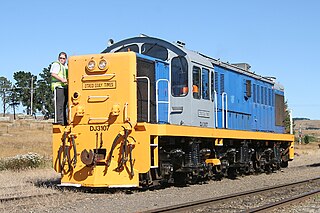
The New Zealand DJ class locomotive is a type of diesel-electric locomotive in service on the New Zealand rail network. The class were built by Mitsubishi Heavy Industries and introduced from 1968 to 1969 for the New Zealand Railways Department (NZR) with a modernisation loan from the World Bank to replace steam locomotives in the South Island, where all of the class members worked most of their lives. Nine of the locomotives remain in use, mainly with Dunedin Railways.

The NZR B class of 1899 was a class of steam locomotives that operated on New Zealand's national rail network. An earlier B class of Double Fairlies had entered service in 1874, but as they had departed from the ownership of the New Zealand Railways (NZR) by the end of 1896, the B classification was free to be re-used. Despite early difficulties, they were amongst NZR's most influential designs.
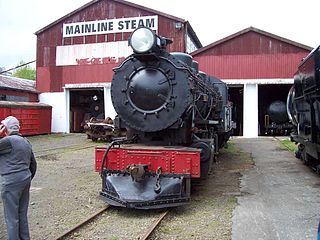
The BA class was a class of steam locomotive built by the New Zealand Railways Department (NZR) for use on New Zealand's national rail network. The first BA entered service in November 1911, with the last of the 11 class members introduced on 14 May 1913.

The NZR BB class of steam locomotives comprised 30 engines operated by the New Zealand Railways (NZR) in the North Island of New Zealand. Ordered to replace smaller locomotives of several classes in the North Island, they were similar in design and appearance to the preceding B and BA classes. The first BB class locomotive entered service in February 1915, with the last to commence operations doing so on 8 March 1917. All were built by A & G Price Ltd of Thames, New Zealand, and as their cylinders had a larger diameter than the B and BA locomotives they were capable of generating more power to haul heavier trains. The most visible difference however was the roundtop firebox in place of the preceding classes Belpaire design. The BB class could haul up to 700 long tons of freight on a level railway line, though they were limited to a top speed of around 40 mph (64 km/h).

The NZR WAB class locomotives were steam locomotives designed, built and used by New Zealand Railways Department (NZR). Their wheel arrangement is described by the Whyte notation 4-6-4T. The locomotives were designed by NZR chief draughtsman S.H. Jenkinson as tank versions of the AB class 4-6-2 Pacific locomotive. Initially, the locomotives were separated into two classes, designated WAB for mainline work and WS for suburban work.
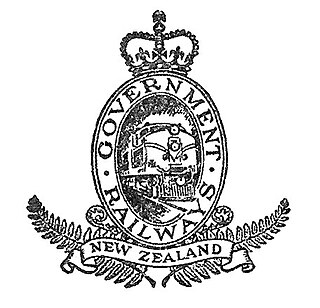
The New Zealand Railways Department, NZR or NZGR and often known as the "Railways", was a government department charged with owning and maintaining New Zealand's railway infrastructure and operating the railway system. The Department was created in 1880 and was corporatised on 1 April 1982 into the New Zealand Railways Corporation. Originally, railway construction and operation took place under the auspices of the former provincial governments and some private railways, before all of the provincial operations came under the central Public Works Department. The role of operating the rail network was subsequently separated from that of the network's construction. From 1895 to 1993 there was a responsible Minister, the Minister of Railways. He was often also the Minister of Public Works.
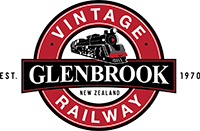
The Glenbrook Vintage Railway (GVR) is a heritage steam railway in Glenbrook, New Zealand.

The NZR JA class was a class of fifty-one 4-8-2 steam locomotives operated by the New Zealand Railways Department (NZR). The locomotives were built in two batches; the first batch was constructed in-home at the Hillside Workshops at Dunedin between 1946 and 1956, while the second batch was produced by the North British Locomotive Company (NBL) of Glasgow, Scotland in 1951. To differentiate between the two batches, the locomotives were identified by their builder.
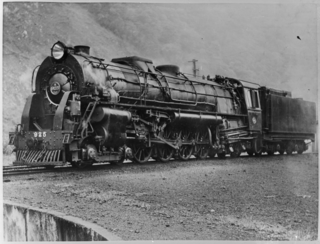
The NZR K class of 1932 was a class of mixed traffic 4-8-4 steam locomotives built by the New Zealand Railways Department (NZR) that operated on New Zealand's railway network. The locomotives were developed following the failure of the G class Garratt locomotives. The class should not be confused with the much earlier K class of 1877-78, the first American-built engines to arrive in New Zealand.

The NZR G class was a type of Garratt locomotives used in New Zealand, later rebuilt as Pacific type locomotives. They were the only Garratt type steam locomotives ever used by the New Zealand Railways (NZR). They were ordered to deal with traffic growth over the heavy gradients of the North Island Main Trunk (NIMT) and to do away with the use of banking engines on steep grades. They were one of the few Garratt designs to employ six cylinders. A mechanical stoker was used to feed coal into the locomotive. The locomotives lasted longer in rebuilt form as standard Pacific locomotives than they did as Garratts, but their numerous mechanical issues lead to their final withdrawal following a union ban on their use in 1956.

The NZR KA class of 1939 was a class of mixed traffic 4-8-4 steam locomotives that operated on New Zealand's railway network. They were built after the success of the K class to meet the increasing traffic demands of the New Zealand Railways Department. The locomotives first appeared with distinctive streamlining, mainly to hide their ACFI feedwater heater systems.

The NZR WF class were steam locomotives designed, built and used by New Zealand Railways (NZR). Their wheel arrangement is described by the Whyte notation 2-6-4T and the first members of the class entered service in 1904. The locomotives were tank engines designed by the Railways Department's Chief Mechanical Engineer A. L. Beattie, and were mainly built for suburban duties such as those between Christchurch and Lyttelton. They also saw main-line service in the Taranaki region, but most of the class members were assigned to branch line and local services throughout the country. Two were experimentally converted to oil burners in 1909-1910. The tests were satisfactory, but as coal was much cheaper than oil at the time, no further conversions took place.

The NZR KB class of 1939 was a class of six mixed traffic steam locomotives built for New Zealand Railways Department (NZR), that operated on New Zealand's railway network. After the success of the K class, the KB class were built to meet the increasing traffic demands on the Midland Line in the South Island. The locomotives had a wheel arrangement of 4-8-4 and first appeared with distinctive streamlining, mainly to hide their ACFI feedwater systems.

An oil burner engine is a steam engine that uses oil as its fuel. The term is usually applied to a locomotive or ship engine that burns oil to heat water, to produce the steam which drives the pistons, or turbines, from which the power is derived.

The Victorian Railways J class was a branch line steam locomotive operated by the Victorian Railways (VR) between 1954 and 1972. A development of the successful Victorian Railways K class 2-8-0, it was the last new class of steam locomotive introduced on the VR. Introduced almost concurrently with the diesel-electric locomotives that ultimately superseded them, the locomotives were only in service for a relatively short time.
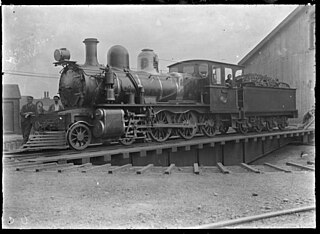
The NZR UC class were a group of ten 4-6-0 steam locomotives obtained from Scottish builders Sharp, Stewart and Company for New Zealand Railways (NZR). Essentially they were developments of the firm's previous batch of 4-6-0s' for NZR.
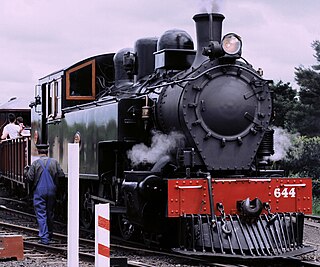
The New Zealand WW class was a class of 4-6-4T tank locomotives that operated on the New Zealand national railway network. They were built for New Zealand Railways Department (NZR), and were the final development of the six-coupled tank engine in New Zealand, the penultimate class of tank locomotives to be built for NZR, and the first class of tank locomotives to be built with superheaters.






















